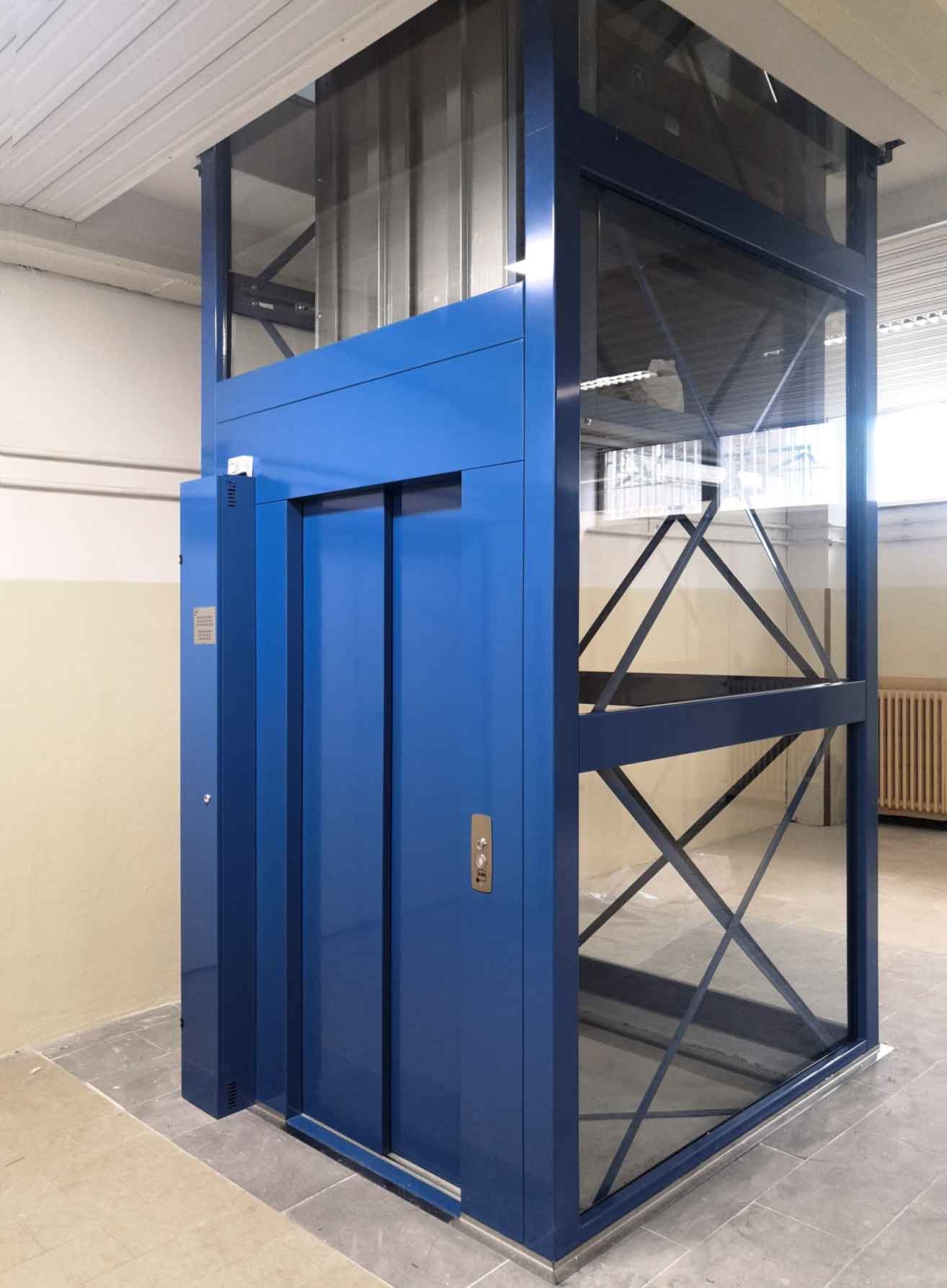Elevator: the complete guide

Table of contents
1. Knowing the different types of elevator helps you make the right choice
The elevator is a device that is now part of our daily lives. It is a very complex product and to find the elevator that best suits your needs, you need to fully understand the differences between the various models.
In this guide we will deal with this topic in depth, looking at the types of elevator on the market and identifying the decisive factors for choosing the right one.
2. What do we mean by elevator?
According to the official definition of the Treccani encyclopedia: the term elevator means “a lifting system for people”.
Source: Elevator in the Treccani Encyclopedia
In practical terms, it is a cabin that moves vertically between the floors of a building, and the movement can be powered by a hydraulic/oil-dynamic or electric device.
From this first definition, it is clear that there are different types of elevators on the market, which can be grouped according to how they work.
3. Types of elevator
When we talk about types of elevator, we often include other vertical transportation devices such as lifts, lifting platforms or goods lifts.
In reality, these are different devices.
The following are only types of elevator.
Hydraulic elevator
Hydraulic elevators are normally supported by a piston positioned at the bottom. The purpose is to push the elevator car upwards, while an electric motor pushes the hydraulic fluid downwards into the piston.
When the elevator needs to go down, the valve releases the hydraulic fluid from the piston.
These elevators require a machine room to house the various components.
They are mainly used in buildings with 2 to 8 floors and can move at a maximum speed of about 70 meters per minute.
Electric elevator
The electric elevator, also called a rope elevator, counterweight elevator or traditional electric elevator, is the most classic type. The movement of the passenger cabin is achieved by the traction of steel cables connected to an electric machine that moves the cabin both up and down.
This system uses a balancing mass called a counterweight that normally balances half the load in the cabin, so that the motor can move the elevator load using less energy. This type of elevator can have a considerable speed, making it suitable for all types of buildings.
Without a machine room
This type of elevator is also called an MRL (Machine Room-Less) elevator.
As the name suggests, the main characteristic of this type of elevator is that it does not have a separate machine room.
All the electrical and mechanical components are installed inside the shaft and the control panel is usually located next to the elevator door on the top floor.
All this is to the advantage of the amount of space that is reduced significantly.
External elevator
The external elevator is a solution widely used in old buildings where there was no space for an elevator shaft.
In this case it will be necessary to create a metal structure shaft for outdoor use so that it can “accommodate” all the elevator components inside.
For public buildings
This kind of elevator is specifically designed to transport numerous people at the same time. Precisely for this reason, it must respect very precise measurements to allow travel for wheelchair users with or without a companion.
From a technical point of view, the elevator for public buildings can be either electric with a cable or hydraulic. Today it is also possible to find on the market models without a machine room and that are energy saving.
External elevator
The external elevator is a solution widely used in old buildings where there was no space for a shaft for the elevator.
In this case it will be necessary to build a shaft in an external metal structure so that it can “accommodate” all the elevator components inside.
4. Which elevator to choose?
As we have seen, each type of elevator has characteristics that are more or less suitable for certain types of homes.
To conclude our guide, let’s see what are the main factors to consider in order to identify the elevator that best suits your needs.
5. Available space
The space available in the building is the first and most important factor to consider.
It may not be easy to evaluate the space needed to install any type of elevator. For this reason it is always best to rely on professionals in the sector who are able to identify the best solutions for all types of space.
6. Design and functionality
Looks are important too! Modern elevators can be customized to match the architectural style of the building without compromising safety and functionality.
In addition, it is possible to add special functions or accessories that make the product even more unique.
7. Operating and maintenance costs
The energy consumption of a lift must be carefully evaluated not only for economic savings, but also and above all for its environmental impact.
Today it is possible to find solutions that combine reduced operating costs with low environmental impact:
these products are certainly the best choice, as they also allow you to minimize maintenance costs.